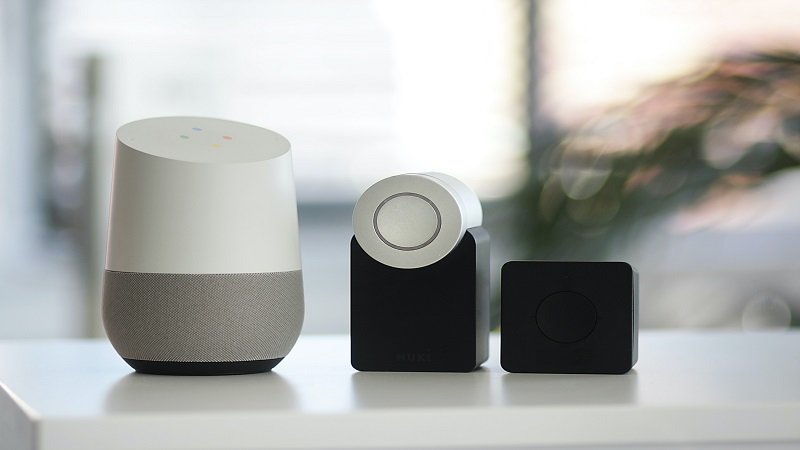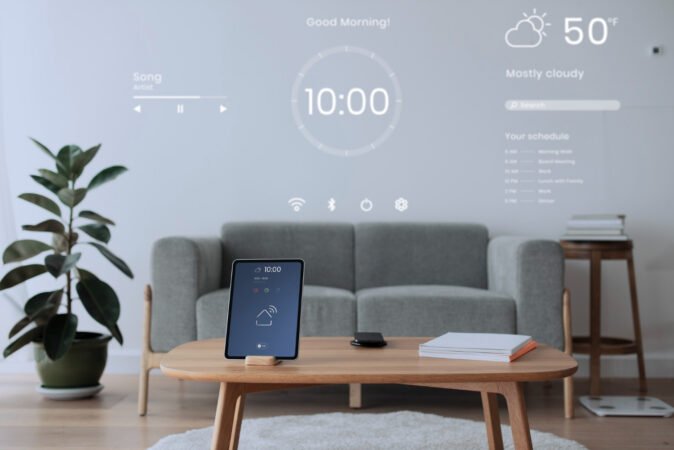How to Control Your Smart Home Automation from Anywhere?
Smart home has revolutionized the way we live, bringing convenience, efficiency, and enhanced control to our daily lives. With the ability to control various devices and appliances remotely, smart homes have become a popular choice for homeowners looking to streamline their routines and make their homes more intelligent.

In this article, we will guide you through the ins and outs of controlling your smart home from anywhere, empowering you with the knowledge to take charge of your smart home ecosystem.
Understanding Smart Home Automation
Before diving into the nitty-gritty of controlling your smart home from anywhere, let’s take a moment to understand what home automation entails. A smart home comprises interconnected devices and appliances that can communicate with each other, often via a central hub or a smartphone app. These devices can include smart thermostats, smart lighting, smart locks, smart security cameras, and even smart kitchen appliances.
The magic of home automation lies in its ability to make your home more intuitive and adaptive. Through sensors and programmed routines, smart devices can anticipate your needs and respond accordingly, creating a seamless and personalized experience.
To control your smart home automation from anywhere, follow these steps:
Choose a Smart Home Hub or Controller:
First, select a smart home hub or controller that is compatible with the devices you have or plan to get. Popular options include Amazon Echo (Alexa), Google Home, Apple HomeKit, Samsung SmartThings, and more.
Set Up the Hub or Controller:
Follow the manufacturer’s instructions to set up the smart home hub or controller. Typically, you’ll need to connect it to your home Wi-Fi network and then add your smart devices to the hub’s app.
Connect Smart Devices:
Pair your smart devices with the hub or controller. This process may vary depending on the device and the hub you are using. Usually, you’ll need to put the devices in pairing mode and then add them to the hub’s app.
Install Smart Home Apps:
Download the corresponding apps for your smart home devices on your smartphone or tablet. These apps allow you to control and manage each device individually.
Create Scenes and Automations:
Many smart home hubs or apps allow you to create scenes and automations. Scenes are custom presets that trigger multiple devices to behave in a certain way with a single command (e.g., “Movie Time” scene dims the lights and lowers the blinds). Automations allow you to set up triggers and actions for your devices based on time, location, or other events.
Set Up Remote Access:
Ensure that your smart home hub or controller supports remote access. This usually involves enabling a feature within the app or hub settings. Remote access enables you to control your devices even when you are away from home.
Activate Voice Control (Optional):
If your smart home hub is compatible with virtual assistants like Amazon Alexa or Google Assistant, set up voice control by linking your hub or devices to these assistants. This will allow you to control your smart home using voice commands.
Secure Your Smart Home:
Since you’ll be controlling your smart home from anywhere, it’s crucial to prioritize security. Use strong, unique passwords for your smart home accounts, keep your apps and firmware updated, and consider enabling two-factor authentication if supported.
Test and Troubleshoot:
Before relying on remote control, test your smart home setup at home and check if all devices respond as expected. Troubleshoot any issues you encounter during testing to ensure smooth remote access.
Control from Anywhere:
Once everything is set up, you can now control your smart home from anywhere with an internet connection. Use the hub’s app or voice commands through virtual assistants to activate scenes, turn devices on or off, adjust settings, and monitor your home remotely.
| Topic | Key Points |
|---|---|
| Understanding Home Automation | Home automation involves interconnected devices and appliances. Devices can communicate and respond to programmed routines. Provides a personalized and intuitive experience. |
| Choosing the Right Smart Home Ecosystem | Select a suitable smart home ecosystem that aligns with needs and preferences. Consider compatibility with devices and voice assistants. |
| Remote Control Options | Control smart home using smartphone apps, voice assistants, or dedicated panels. Web portals for access via web browsers. Real-time updates and notifications. |
| Security and Privacy Considerations | Use strong passwords and enable two-factor authentication. Regularly update firmware and secure the home network. Protect sensitive data and prioritize security. |
| Embracing the Future of Smart Homes | Smart home brings convenience and customization to daily life. Prioritize security without compromising on futuristic living. Transform your living space. |
How much does it cost for Smart Home Automation to control it?
The cost of setting up a smart home automation system can vary depending on several factors, including the number and type of devices you want to install, the complexity of the system, and the brands you choose.
| Component | Average Cost Range | Installation Cost (Approx.) |
|---|---|---|
| Smart Home Hub/Controller | $50 – $200 | DIY (No Additional Cost) |
| Smart Bulbs | $10 – $50 per bulb | DIY (No Additional Cost) |
| Smart Plugs | $10 – $30 each | DIY (No Additional Cost) |
| Smart Thermostats | $100 – $250 | DIY: $0 – $100 Professional: $100 – $300 |
| Starter Kits | $100 – $500 or more | DIY (No Additional Cost) |
| Monthly Subscriptions | $5 – $30 per month | N/A (Recurring Cost) |
| Voice Assistants | $30 – $200 | DIY (No Additional Cost) |
| Upgrades/Expansion | Variable | N/A (Variable Cost) |
Please note that the installation cost for smart thermostats can vary depending on factors such as the complexity of your existing HVAC system, any additional wiring or modifications needed, and whether you choose to install it yourself (DIY) or hire a professional.
HVAC stands for Heating, Ventilation, and Air Conditioning. It is a system that is used to control the temperature, humidity, and purity of the air in an enclosed space.
For a DIY installation of a smart thermostat, there might be little to no additional cost, as it involves simple setup and connection. However, if you opt for professional installation, the cost could range from $100 to $300 or more, depending on the complexity and time required.
Embracing the Future of Smart Home Automation
In conclusion, controlling your smart home from anywhere opens up a world of possibilities and convenience. With the right smart home ecosystem and remote control options, you can manage your devices effortlessly and customize your living space to fit your lifestyle seamlessly.
Remember, while the ease of access and automation are incredible, security and privacy should remain at the forefront of your smart home journey. By following best practices and being mindful of potential risks, you can fully embrace the future of smart homes without compromising on safety.
FAQs – Controlling Your Smart Home from Anywhere
- What is smart home automation?
Smart home automation involves interconnected devices and appliances that communicate with each other, enhancing convenience and adaptability in your living space. - Which smart home ecosystem should I choose?
The right choice depends on your preferences. Ecosystem A offers user-friendly apps and voice assistant integration, Ecosystem B provides comprehensive control through a hub, and Ecosystem C prioritizes security with locks and cameras. - How can I control my smart home automation remotely?
You can control your smart home from anywhere using smartphone apps, voice assistants like Amazon Alexa or Google Assistant, remote control panels, or web portals accessible through a browser. - How can I ensure the security of my smart home?
To enhance security, use strong passwords, regularly update firmware, secure your home network with encryption, and enable two-factor authentication (2FA) for your smart home accounts. - What benefits does smart home offer?
Smart home offers convenience, efficiency, and personalization. With remote control options, you can manage devices effortlessly, making your living space more intuitive and futuristic.
If you enjoyed this post, you might also like:
The benefits of home automation for energy efficiency!
The Evolution of Smart Home: Tracing the history of smart home Technology
US Cyber Trust Mark – Biden Administration to Launch New Cybersecurity Label for Smart Home Devices

